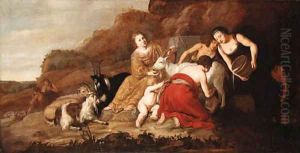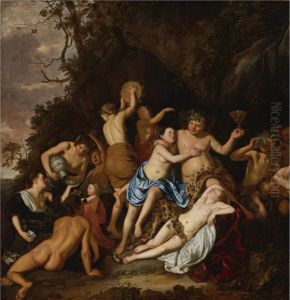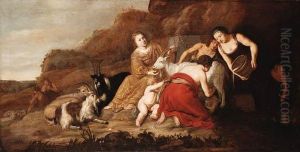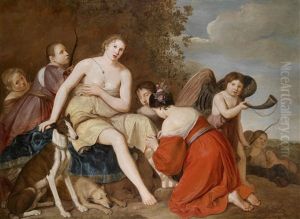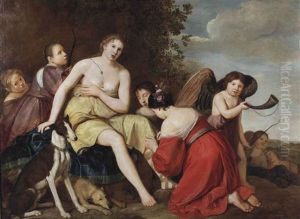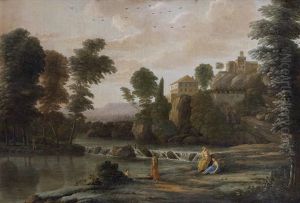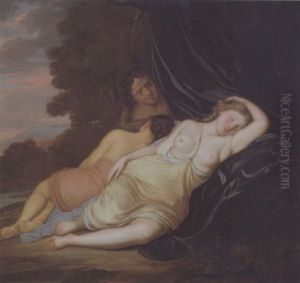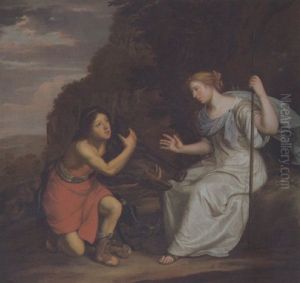Johan Danckerts Paintings
Johan Danckerts was a Dutch painter and engraver who lived during the 17th century. Born in The Hague in 1615, Danckerts came from a family of artists; his brother Hendrick Danckerts was also a notable painter. During this period, the Dutch Golden Age, art was flourishing, and painting was an integral part of Dutch culture. This era was characterized by great wealth and cultural achievements, especially in the realms of painting, philosophy, and science.
Johan Danckerts is not as well-known as some of his contemporaries such as Rembrandt or Vermeer, but he still contributed to the vibrant art scene of the time. He primarily focused on painting portraits, a popular genre in Dutch art, but he also produced historical and allegorical paintings. Danckerts' style was typical of the Dutch Golden Age, with a keen attention to detail and a strong emphasis on realism and the effects of light and shadow.
In addition to painting, Danckerts was an accomplished engraver, and he produced several prints that have been attributed to him. His engravings are particularly noted for their technical skill and the clarity of their lines. His works were largely influenced by the Baroque style, which was dominant in European art during the 17th century. This style was characterized by dramatic expression, rich colors, and a grand sense of movement and energy.
The exact details of his career and the breadth of his work are not as documented as those of some of his peers, which has led to him being somewhat overshadowed in the annals of art history. Despite this, his contributions to the Dutch art of the period remain valuable for understanding the scope and variety of artistic endeavors during this prolific period.
Johan Danckerts died in 1686, having lived through an age that valued artistry and craftsmanship. His works, like those of many artists of the time, would have been collected by the wealthy merchant class, which played a significant role in the patronage and support of the arts in the Dutch Republic. Danckerts' legacy is part of the rich tapestry of Dutch cultural history, offering insight into the diversity of talent that proliferated during the Golden Age of Dutch art.
